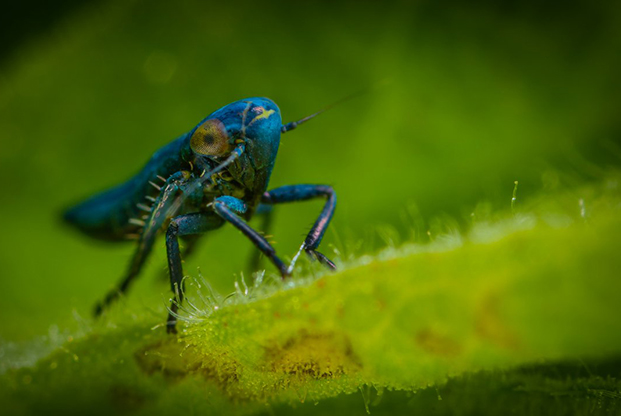
DARPA is offering a total of $1 million to researchers to study how miniature insects function and then apply those lessons to new prototypes that could potentially change the way the Defense Department thinks about information processing. DARPA Twitter photo.
Defense Department researchers think tiny bug brains might be key to developing new and more efficient artificial intelligence computational frameworks and strategies.
“The past decade has seen explosive growth in development and training of AI systems, which are now embodied in digital computing processes spanning several key industries,” according to an artificial intelligence exploration opportunity posted by the Defense Advanced Research Projects Agency on Jan. 4. “However, as AI has taken on progressively more complex problems, the amount of computation required to train the largest AI systems has been increasing ten-fold annually.”
The solicitation does not identify the type of bug on which these new research concepts should be based, but notes that some miniature insects have neurosystems based on just a few hundred neurons, yet they use “low-power, and fast integrated sense-control-actuate systems” for “higher-level behaviors, such as feeding, reproduction, and survival.” DARPA wants to know how they do it, and more importantly, how that can then be applied to military AI systems.
It’s offering a total of $1 million to selected performers to create computational models inspired by these tiny insects. Officially known as the Microscale Bio-Mimetic Robust Artificial Intelligence Networks, the program will be split in two phases. In the first phase, performers will be awarded no more than $200,000 to conduct a six-month feasibility study looking at the insect’s intelligence system and its physical interactions involved in signaling. The second phase, valued at up to $800,000, will take 12 months and will be focused on developing a prototype computational model based on lessons learned from phase one.
Proposals are due by Feb. 4 and work is slated to begin by April 3.
The Artificial Intelligence Exploration program, first announced in July 2018, will be a key component of DARPA’s AI Next campaign, DARPA spokesman Eric Butterbaugh told Air Force Magazine.
“AIE constitutes a series of high-risk, high payoff projects where researchers will work to establish the feasibility of new AI concepts within 18 months of award,” Butterbaugh said. “Leveraging streamlined contracting procedures and funding mechanisms will enable these efforts to move from proposal to project kickoff within three months of an opportunity announcement.”